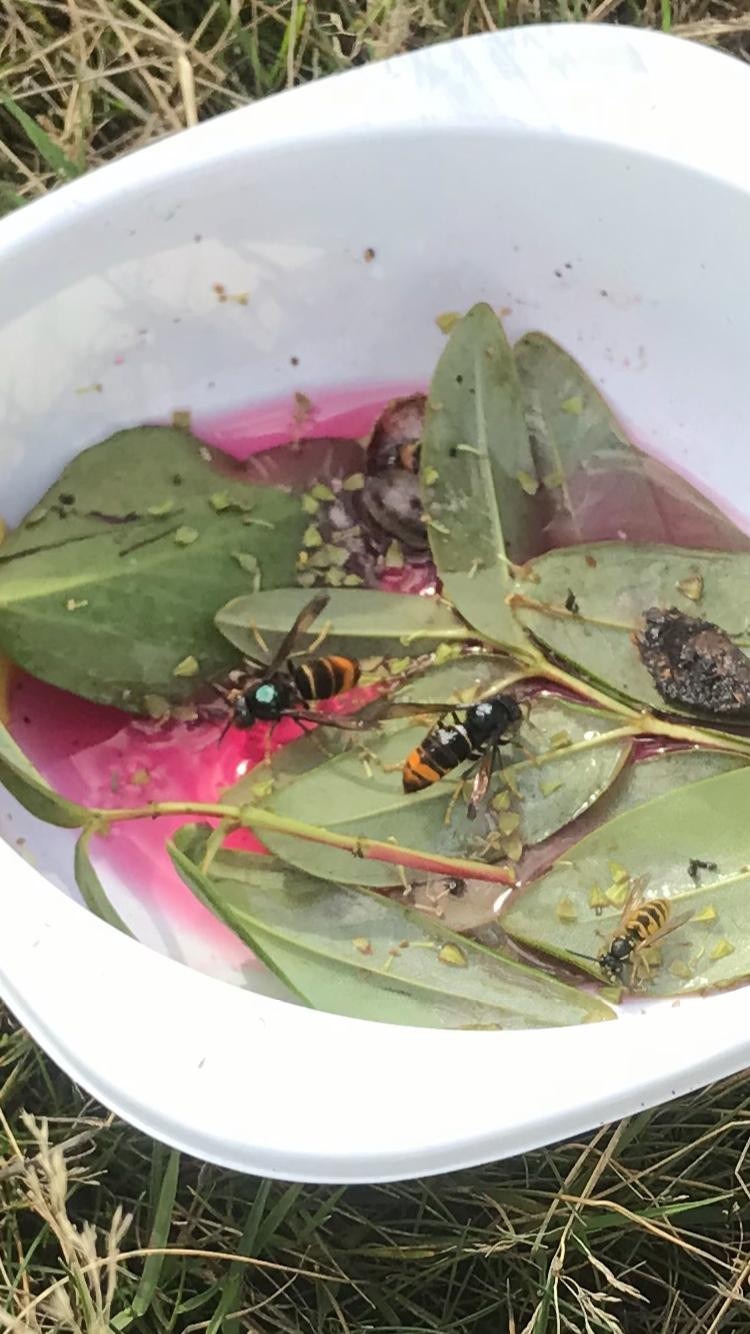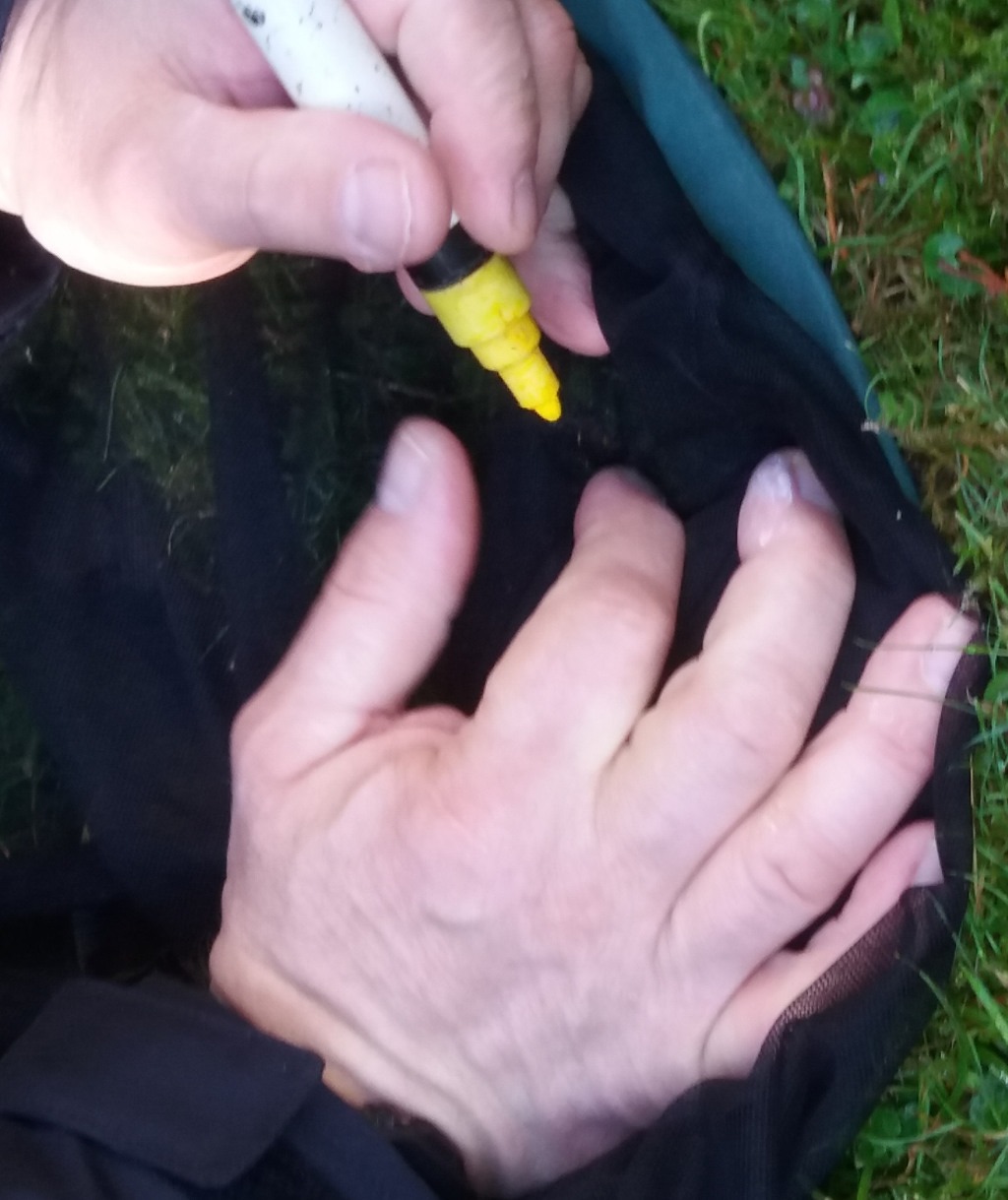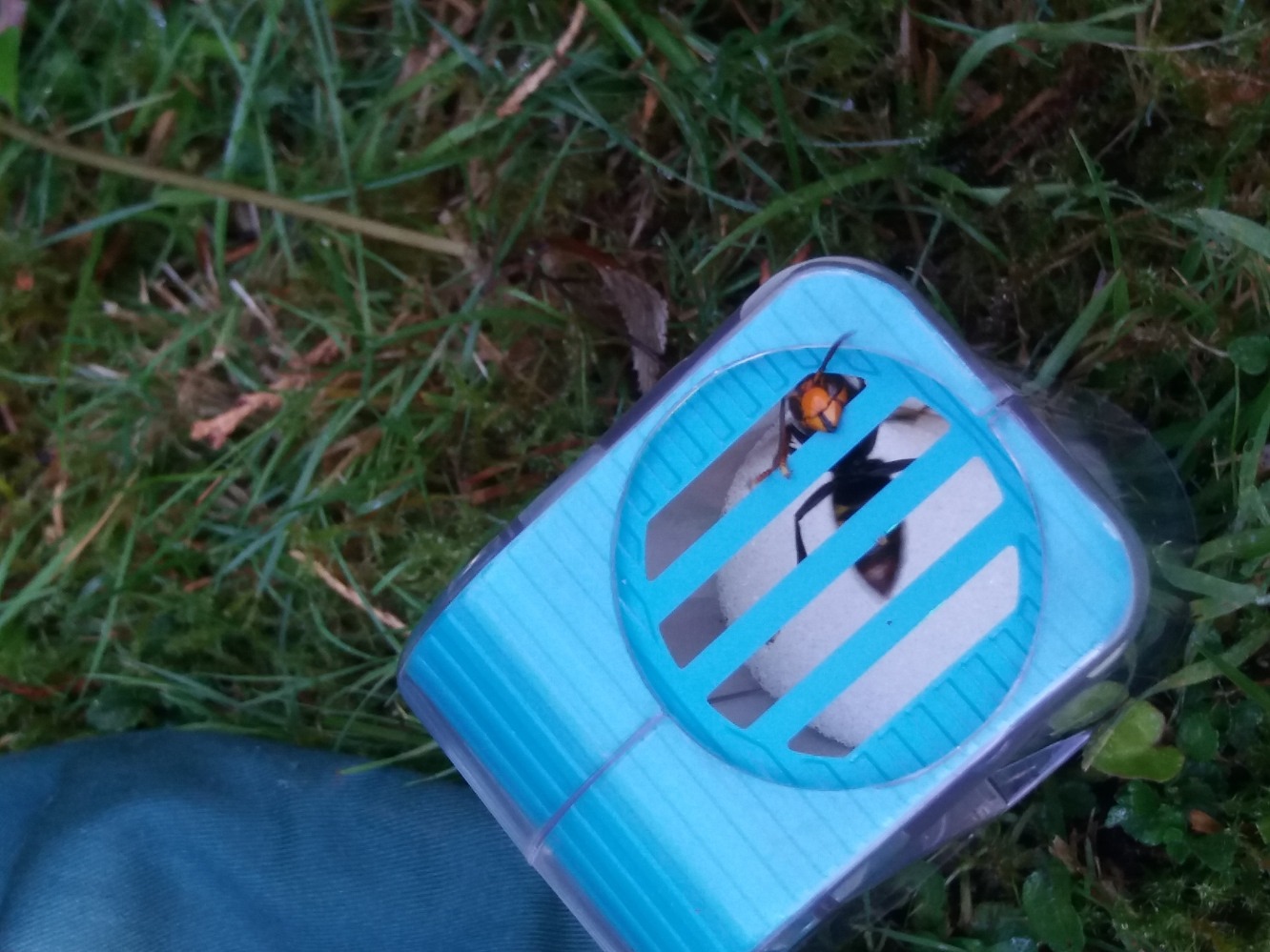Well that was fascinating.
Having been advised of Asian Hornets in Dorset we were asked to help find a nest as a member of the Asian Hornet Action Team for the area.
Sounds simple - we were looking for something the size of a football hanging in a tree.
I guessed we would all form into a line like a police search team and walk along in step but instead of looking down we would be looking up. Easy!
The area we were allocated was woodland with grassy areas nearby. My first task of the day was to stand by a large ivy plant watching for the Asian Hornet. I had already been shown one nearby so I knew what I was looking for. I must say once you have seen one in flight it is not something you are likely to forget - or confuse with anything else.
Anyway the ivy was in the sun and loads of insects came and went. A very pleasant way of spending an October morning even if a little painful on the neck looking up all the time. Eventually we spotted one and with a deft flick of the wrist it was trapped in a butterfly net. Needless to say it was not I who showed such dexterity with a butterfly net.

The beast was unmarked and so it was marked with a unique coloured dot. From there it was taken to a feeding station set up near to where we suspected the nest was situated. There it was introduced to the food - Trappit - in the hope that it would remember it was food and where it was.

It was then released! Now if I had done that I would be in serious trouble releasing a non-native species into the wild but this operation was being run by those who are allowed to release them.

Carefully we all tried to watch where it went. As it rose up it was easy to spot but once the trees were its background we lost it. However we did now have a general idea of the direction.
This was repeated several times using Asian Hornets with different colour spots and we now had a good idea of the direction of the nest. But how far was it away?
The next stage was to time the flight from the moment it left the feeding station to when it returned. We assumed it flew straight to the nest, disgorged the food and then flew straight back to the feeding station. Knowing the speed of flight we were able now to estimate the distance to the nest and the direction. Perhaps now we would form in a line and look into the canopy.
No it was not to be. We gathered in the area where we suspected the nest was situated and looked up. In winter it would be easy to find a nest with no leaves around but at this time of year not so easy. It took us about half an hour and at least eight of us looking up the tree till one of us spotted the nest. Once found we trained binoculars on it and could see the Asian Hornets going in and out.
And that was job done as far as I was concerned. It now remained for the specialist teams to get in there and remove the nest - preferably after dark when they have all returned. Once that was done we will have to monitor the area. It will not be declared clear until we have had five consecutive days with no sitings either of flying Asian Hornets or Asian Hornets in traps.

